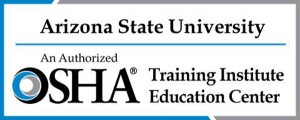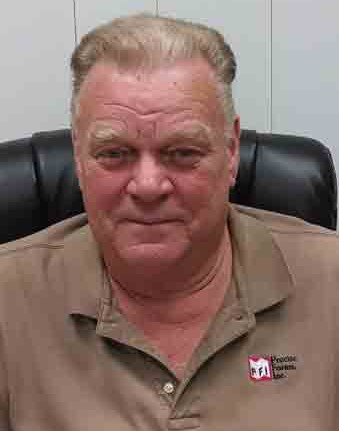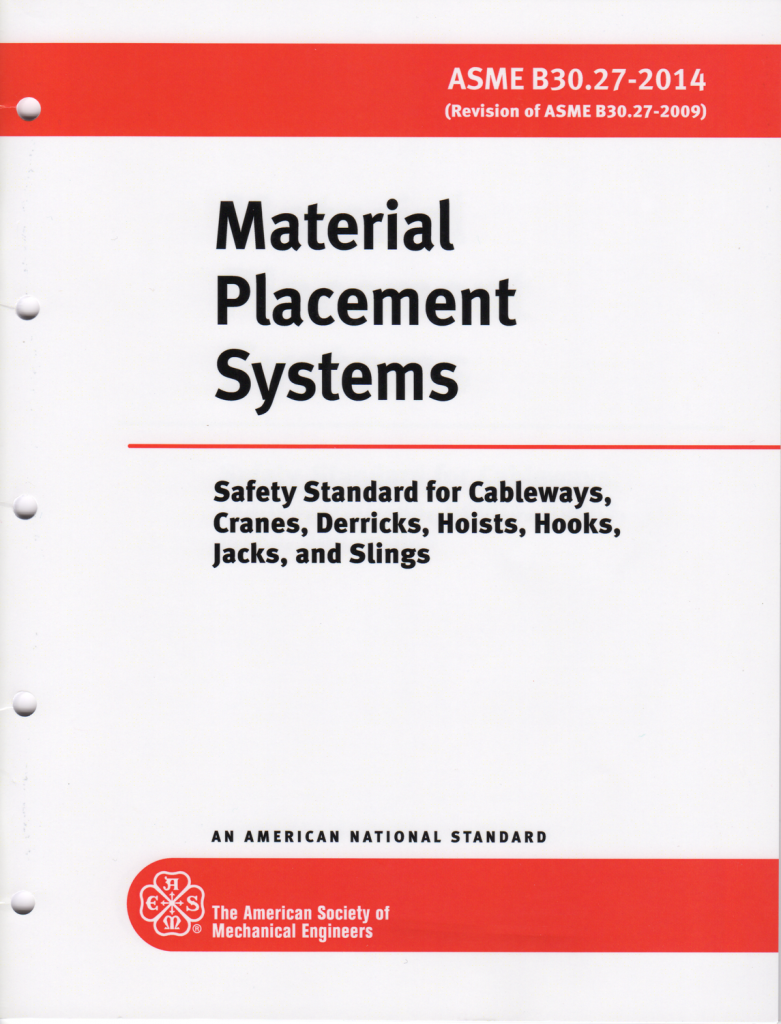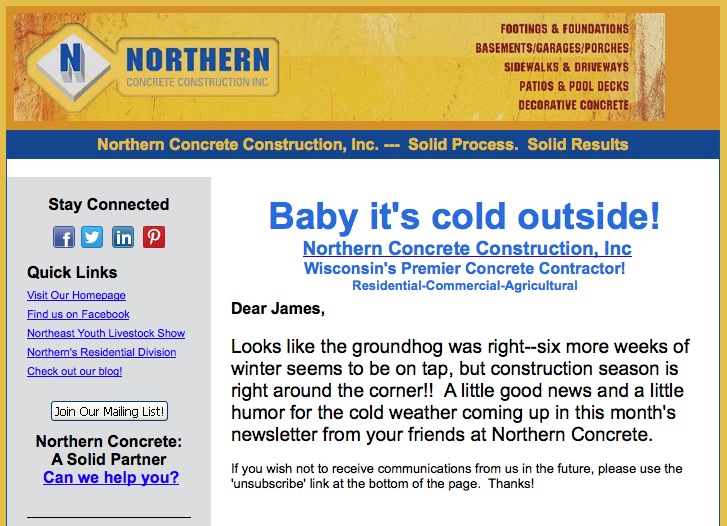40 Years of Evolution Another Milestone
The CFA will celebrate its 40th year of service to the residential concrete foundation industry at this year’s Summer Convention in Sandusky, Ohio. I have been with the CFA for just over half of that time. During that period, a lot has happened to the nation; the concrete industry; technology; our member businesses, and the Association. We have been through a terrorist attack; the biggest recession since the Great Depression; and a technology revolution that has no end in sight.
There have been changes in the CFA and its members during that period. Many of our family-owned member companies are in their second generation and some poised to enter their third generation. Membership has grown, retracted, and that growth has been renewed. We lost over half our members but we are now on our way back, as are the CFA members who survived (unfortunately not all did).
Residential Concrete now has its own standard (or code) within ACI as well is a CFA-developed standard. Contractors are now represented “at the table” where codes and standards are developed.
On the industry side, concrete, the material that forms the basis of our businesses, has evolved. While still comprised of the same basic constituents, superplastisizers, water reducing agents, and a host of other admixtures make concrete better, greener, and more cost effective.
Equipment utilized by CFA members has revolutionized placement of forms and concrete. “Lugging” forms into a hole has been replaced with boom trucks; concrete no longer placed with a wheel barrow, it is now conveyed or pumped.
Then there is technology. Cell phones, then smart phones, tablets, laptops, the Internet and all of the advancements made possible with these and other technologies. Ordering, scheduling, estimating, communications, drawing and visualization – all improved with technology. The total station, a device that a few pioneering members made a standard in our industry, is now common on nearly every job site.
One thing that has not changed however, is the dedication of our members and staff to make their businesses and products the best in the industry. This wouldn’t be possible without the dedication of our members and their willingness to share ideas and learn from the experiences of others.
This is why we ask you to join us July 31-August 2 at the Kalahari Resort in Sandusky, Ohio. Help us celebrate 40 years of service to the industry and participate in what is still the primary value of membership – networking with your peers.
Ed Sauter esauter@cfawalls.orgThis Experience Has Served Me
Isn’t it enjoyable to see good people do good work? We are blessed to have a strong team of impressive individuals at our foundation company. Our team has a nice blend of people in different stages of their lives, and their careers. To be successful, we need a mix of new learners, skilled workers, coordinators, leaders and mentors. Young starters bring untarnished energy and enthusiasm…and some healthy competition. Skilled workers and craftsmen are the athletes that we need to succeed. Leaders and coordinators put them in the right position and optimize the process. Mentors give us vision, guidance and a moral compass.
I have had the pleasure of witnessing similar attributes at the CFA. As a kid, I saw the passion and excitement of the “poured wall pioneers.” When I entered the work force, the CFA became my “concrete college” with rooms full of experts at my disposal. Our company has grown using lots of CFA ideas, and it has been my pleasure to share our experiences with others.
“Serving” on the board and as CFA President doesn’t sound quite right, as the experience has served me. Yes, we have done what we could to add value to our members and advance our industry, but sorry folks…I have to admit that I have taken more than I have given. This has surprised me as I’ve looked back on the experience.
So let me share the secret. Getting involved isn’t really a sacrifice—it’s a benefit. Being active doesn’t really cost you time—it makes you more efficient and productive. Travelling to meet doesn’t really cost you money—it gives you moneysaving ideas.
It is no secret that our industry needs more young starters. Perhaps my next role in my company and at the CFA will be to encourage and share with the younger generation. But I have a feeling I will still get more out of it then what I put in.
See you in Sandusky!
Jim Bartley, Bartley Corp jim@bartleycorp.comExciting Business Opportunity Available for Enthusiastic Self Starter
Exciting Business Opportunity Available for Enthusiastic Self Starter
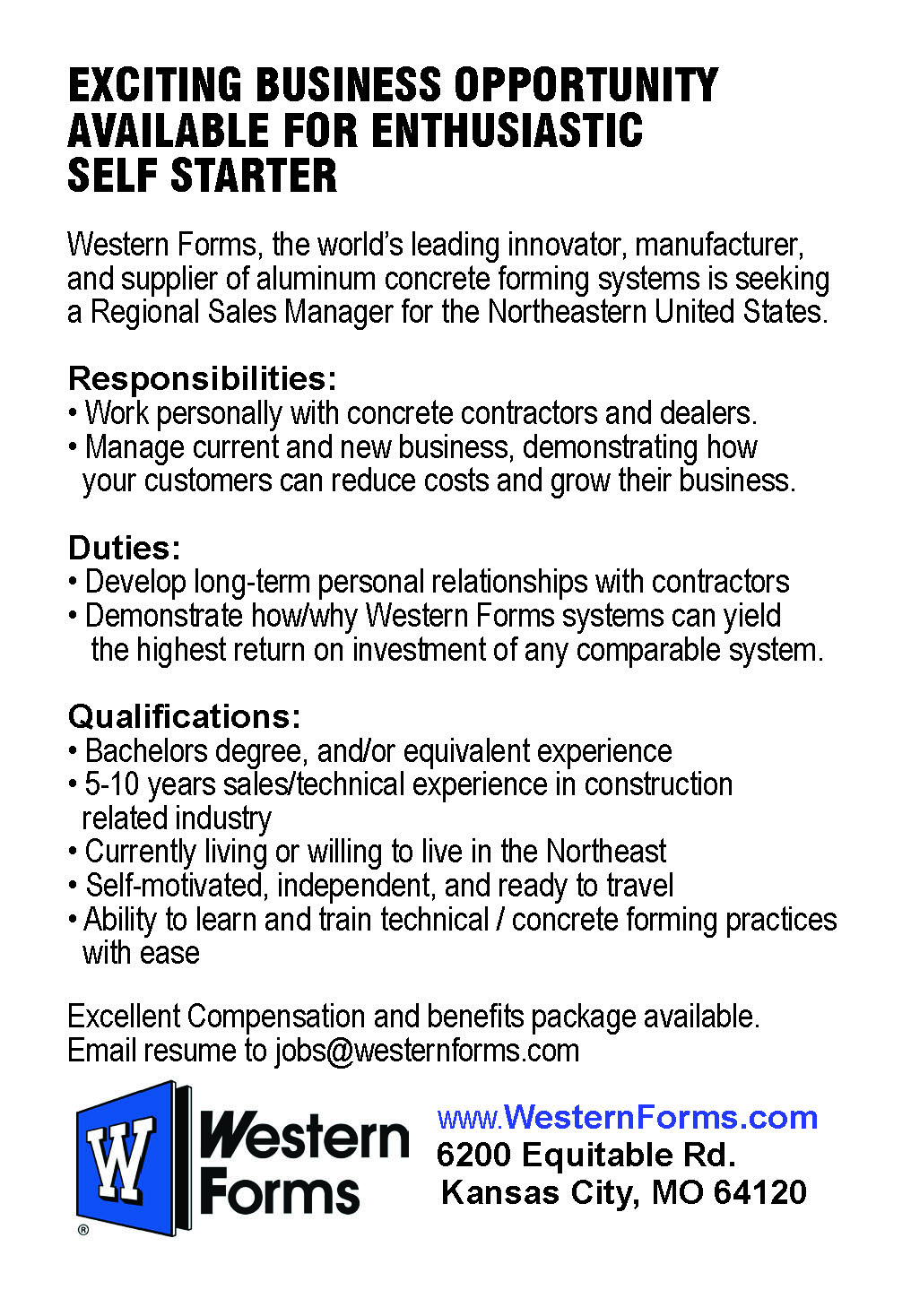
Responsibilities:
• Work personally with concrete contractors and dealers.
• Manage current and new business, demonstrating how your customers can reduce costs and grow their business.
Duties:
• Develop long-term personal relationships with contractors
• Demonstrate how/why Western Forms systems can yield the highest return on investment of any comparable system.
Qualifications:
• Bachelor’s degree, and/or equivalent experience
• Self-motivated, independent, and ready to travel
• 5-10 year’s sales/technical experience in construction related industry preferred
• Currently living or willing to live in the Northeast
Excellent compensation and benefits package available.
Email resume to: jobs@westernforms.com
Precise Forms Announces Retirement of Vice President, Jim Crain
After 45 years of industry service, Crain sets sights on a new future
June 11, 2014 – Bates City, Missouri
Precise Forms, Inc., manufacturer of aluminum cast-in-place concrete forming products and accessories, proudly announces changes to its leadership with the retirement of long-time Vice President of Sales & Marketing, Jim Crain.
“It is with excitement that I’m taking on a different phase in my life,” states Crain. “I have been in the poured wall industry since the late 1960’s and have seen many changes not only in methods and processes but have seen many second generations take over the family businesses. It has been a true pleasure meeting and working alongside many of the CFA members over the years dating back to the PCWCA days and the original founding group. My involvement with the CFA has provided so very many benefits and educational issues to me personally as well as Precise Forms, Inc. I could not imagine my professional career without the CFA.”
Effective this past April, Jim officially retired from 45 years of service to the industry with Precise to pursue interests in special isolated projects for the company. Precise has named Mike Pickell, mpickell@preciseforms.com, as the new Vice President of Sales for the company. He will serve in all capacities for Precise Forms that Jim had previously been known throughout the industry for providing. This includes the CFA and its members in their interests and needs for removable forming.
As for Jim…”I will continue working full time for the remainder of 2014 and then take a greatly reduced role starting January 1, 2015 on special projects.”
When asked about his reflections of his involvement with the CFA and the 40 years of history that has been logged together, Jim offered, “I want to express my deep appreciation and gratitude to the CFA and its members for the kind consideration that was granted me over the decades. It has been a wonderful journey and I have met the most interesting and quality people in my 45 plus years in the poured wall industry. Thank you all from the bottom of my heart.”
About Precise Forms
Precise Forms has been manufacturing aluminum concrete forms since 1967. As a leader in the concrete form manufacturing industry, Precise has set the highest quality standards for concrete form production. In the early years Precise produced concrete forms primarily for footings and basements. Since then, Precise has expanded to meet market demands such as precast concrete, concrete homes, commercial, international development, as well as any other concrete form design that has been required.
Today, Precise is adding valuable technologies to partner with its proven forming technologies. These include HelixTM Micro-Rebar and the EASI-WALL System for insulating concrete foundation walls. For more information on Precise and the company’s full line of products and services, visit www.preciseforms.com or contact their sales department at info@preciseforms.com.
Precise Forms, Inc.
201 North Spruce, Bates City, MO. 64011
800-537-0706 (toll-free phone) | 1-816-690-3400 (local phone) | 1-816-690-0080 (fax)
CFA Foundation Fundamentals
Positive Drainage…Curing Compound…Fluid Pressure? What were those words the foundation contractor used during our meeting yesterday? Construction projects, like so many other business endeavors, are not without communication problems between parties. Many are associated with terminology that is common to the contractor, yet distinctly foreign to the customer or owner.
Although the following list of frequently used terms is not exclusive to the foundation construction industry, these terms are certainly used often in that arena. Understanding them increases your ability to communicate with the foundation contractor and allows for a more satisfying project. By taking the time to learn some basic terms, you ensure your needs are met.
Admixture
Concrete is composed of water, aggregates and cement. Materials other than these, generally liquid and not considered reinforcing, that are added to the mix before or during mixing are considered admixtures.
Backfill
Material, such as gravel or soil, placed in an excavated space, generally around a foundation or retaining wall.
Bulkhead
A partition in formwork blocking fresh concrete from a section of the form, such as at a construction joint or wall end.
Concrete, reinforced
Concrete that contains deformed steel reinforcement and is designed on the basis that the two materials act together in resisting forces.
Concrete, unreinforced
Concrete that does not contain reinforcement for structural purposes. It is also referred to as “plain” structural concrete. Such concrete may include horizontal reinforcement that is placed to reduce temperature and shrinkage cracks.
Curing compound
A liquid that coats the surface of newly placed concrete to retard the loss of water or reflect heat, providing an opportunity for the concrete to develop its properties in a favorable temperature and moisture environment.
Dampproofing
A treatment of concrete to retard the passage or absorption of water or water vapor. Examples include tar or polyethylene sheeting.
Equivalent fluid pressure
The pressure applied to a construction from granular-like materials, such as soils, exhibited as a fluid-like force. The applicable equivalent fluid pressure varies for each type of soil.
Expansive soil
A soil that changes in volume due to variation in moisture content.
Flat wall
A conventionally formed concrete wall with flat surfaces.
Footing
A structural element that transfers loads directly to the soil.
Foundation
The structural elements through which the load of a structure is transferred to the earth. Foundation wall The structural element of a foundation that transfers the load of a structure to the footing or soil. A foundation wall includes basement and stem walls.
Hydrostatic pressure
The force exhibited as a live load, applied by water acting on a surface.
Joint
A physical separation in concrete, including cracks, intentionally made or forced to occur at specified locations.
Joint, contraction
A groove in a concrete structure, either formed, sawed, or tooled, to create a weakened place to regulate the location of cracking resulting from the dimensional change of different parts of the structure. (Also known as a control joint).
Joint, isolation
A separation between two individual components of a concrete structure, usually a vertical plane, designed to interfere with the performance of the structure, yet allow movement in three directions and avoid the formation of cracks else where in concrete.
Keyway
A recess or groove in one placement of concrete, which is filled with concrete of the next placement giving shear strength to the joint.
Lateral Pressure
The force exerted in a horizontal direction on a structural member.
Positive drainage
Grading used to control and direct the flow of water around and away from a structure.
Slab-on-ground
A slab which is unreinforced or reinforced and continuously supported by ground, and whose total loading, when uniformly distributed, would impart a pressure to the grade or soil that is less than 50 percent of the allowable bearing capacity thereof.
Slump
A measure of consistency for freshly mixed concrete determined by measuring the amount of drop in a molded specimen of concrete immediately after removal of the slump cone.
Subgrade
Soil prepared and compacted to support a structure or a pavement system.
Unbalanced fill
The difference in height between the exterior and interior finish ground levels. Where an interior concrete slab is provided, the unbalanced backfill is measured from the exterior finish ground level to the top of the interior concrete slab.
Waterproofing Material
A long-term protection treatment to prevent hydrostatic water intrusion. Examples include elastomeric membrane or drainage with a bonded, crack-bridging coating or sheet; or an unbonded, elastic or semi-rigid sheet system.
Final Thought
Too often, miscommunication occurs between homeowners and foundation professionals because of a misunderstanding of terms. With a clear understanding of each others’ language, everyone clearly comprehends the project’s goal and objectives. Learning this language from the project onset creates a vehicle for clear communication. Open lines of communication begin when everyone is speaking the same language, and is the first step to ensuring a successful project.
OSHA’s National Safety Stand-Down for Fall Prevention
OSHA is promoting a national Safety Stand-Down during the week of June 2-6, 2014 in an effort to raise awareness among employers and workers in the construction industry about the hazards of falls. The Concrete Foundation Association (CFA), www.cfawalls.org, fully supports the program and strongly encourages all of its member companies to participate in this awareness event.
Fatalities caused by falls from elevation continue to be a leading cause of death for construction workers, accounting for over a third of all construction fatalities recorded in 2012. The majority of those deaths were preventable.
The Safety Stand-Down is a voluntary pause during the workday to allow dedicated time for employers and employees to focus on recognizing hazards and preventing falls. The time can include toolbox or tailgate talks, safety presentations, or discussions on specific topics like ladder safety, scaffolding safety and the proper use of aerial platforms. The meeting provides information to workers about hazards, protective methods, and the company’s safety policies, goals and expectations. The program is a part of OSHA’s fall prevention campaign to plan, provide and train – three simple steps to prevent falls. This should be included as part of a Stand-Down discussion.
The CFA has produced an extensive alternate fall protection training and implementation plan for its members. The content for this AFPP, compliant with section 1926.502 (k), can be obtained by contacting Jim Baty, Managing Director for the Concrete Foundations Association or by calling 866-CFA-WALL.
Falls are preventable incidents that you can address when you plan, provide and train. Take this opportunity and join many others in this National Safety Stand-Down. Don’t wait, sign up today, plan your event and improve safety on your work site.
Learn more about the Safety Stand-Down on OSHA web site, www.osha.gov/StopFallsStandDown/index.html. Managers are encouraged to plan a stand-down that works best for their workplace anytime during the week of June 2-6, 2014.
Responsibilities for all personnel on a concrete pour are now specified in ASME B30-2014
The American National Standard for material placement system safety is ASME B30.27.
(Material placement systems are concrete pumps and concrete conveyors.)
ASME has released B30.27-2014. It is currently available as an electronic download and as a printed booklet. The date of issuance was March 26, 2014. It becomes effective one year after the date of issuance.
The major changes in B30.27-2014 versus the 2009 edition are the addition of translation requirements for companies importing equipment into the United States from other countries, and the addition of responsibilities for all personnel when a material placement system is used on a concrete pour, from the general contractor to the concrete mixer truck driver and everybody in between.
The responsibilities section was adapted for use in B30.27 from the B30.5-2011 (mobile cranes) standard, which has been in effect since January 2012. The reason for the responsibility delineation is to give everyone involved in a concrete pour the knowledge needed to complete the pour safely. If specialized training is required, it is shown. Expectations of setup locations are spelled out. What an operator should know, and the items a contractor should consider when ordering a machine are listed. The only way everyone can go home safely after the pour is if everyone knows their piece of the safety puzzle and works to accomplish it.
ASME B30.27-2014 contains information that should be of interest to everyone involved with concrete pumping or concrete conveying. It is advisable to obtain a copy and implement any changes necessary to ensure compliance with the specifications. It is assumed that the specifications will be used by regulatory (OSHA) and legal entities (attorneys) as a benchmark against which the players on a concrete pour will be judged.
B30.27 is republished on a five-year cycle. The 2009 version of B30.27 became active in June, 2010 and will be in effect until March 26, 2015. The 2014 version will remain in effect until one year after the next revision is published.
Copies can be obtained from the American Society of Mechanical Engineers (ASME). Go to http://www.asme.org/ use the ‘codes and standards’ link; then enter B30.27 into the ‘keywords’ field or direct to the information page here. The standard is also available from Global and other standards retailers. Because of severe restrictions placed on the .pdf version (one user, no printing), I recommend the paper version.
Questions or requests for interpretation regarding the ASME standard should be addressed to:
Secretary of the B30 committee, ASME, Three Park Avenue, New York, NY 10016-5990.
Contractor’s Footing-Form Innovation Becomes a Competitive Advantage
Published by Concrete Contractor Magazine, April 23, 2014In the early 1990s Barry Herbert, then president of Otsego, Mich.,-based concrete contractor Herbert Construction Co., learned an alternative method for forming footings. Barry spoke with Ron Colvin, a concrete contractor from Berrien Springs, Mich. about footing construction. The two had become friends through their membership with the Concrete Foundations Association of North America (CFA). Colvin had eliminated the typical two-by-four construction of footing forms.
My father Barry, my brother Mike, and I, visited Colvin. He showed us a couple of his job sites where we saw the forming system in action. The system used thin-gauge metal forms instead of wood. The forms were simple to set up and prepare for concrete placement. Once the concrete was placed, the forms were easily removed and ready to be used again.
We decided to implement the system in our own company. We hired a steel company to cut and bend the metal and set about teaching our field crews to use the system. It was easy to learn and simple to use, which shortened the learning curve.
Marketing Corner: Building Your New Marketing Program
Q&A WITH NORTHERN CONCRETE
Leveraging digital media and relationships may be about as far from your mindset as a concrete contractor as is venturing into new market such as high-rise core construction. The complex world of Google, Yahoo, facebook, LinkedIn, twitter, instagram, Pinterest and a host of others has for many turned competent and savvy business minds away from what is potentially the most significant frontier for your business.
Consider this, today’s Millennium generation is learning at breakneck pace and is applying their skills at any moment in a multiplicity of ways. In order to reach them and reach them effectively, your company must begin to consider the best ways to make your information both relevant and convenient. Starting now can make a significant impact on both the learning curve and the leadership that you evidence to the industry.
The real problem, however, is that like any business model modification, there are great risks at stake. Risks that involve hiring new staff or identifying staff resources that can be reallocated or redirected. Risks that consist of what information should you present, how much information should you offer and who should you be targeting. These are not uncommon to any other business element that you have investigated in the past, they just become perceptibly uncomfortable due to how big the environment for decision making is and how seemingly uncontrolled the audience may be.
In this edition’s look at current marketing strategies, CFA Managing Director, Jim Baty sits down with Matt Kapinos of Northern Concrete to take a look at their digital marketing program and the use of effective monthly email newsletters.
Their ‘Solid Process. Solid Results.’ newsletter is a strong collection of industry news, feedback on influences affecting their market and often a dose of light-heartedness that helps their customers become more engaged with them as an information resource.
CFA: Good afternoon, Matt. Thanks for taking the time to discuss some of these questions I have for our readers about your monthly electronic newsletter. I’m really enjoying receiving this each month.
Matt: Thanks for the opportunity. I’m glad you like the newsletter. It has been a fun product for us to pursue as we look for new ways to create lasting relationships and reliability for our customers.
CFA: How long has your company been producing an electronic monthly newsletter?
Matt: We started early last year, but were fairly intermittent. I have committed to one per month to the commercial, agricultural, and residential market segments, and one to anyone related to education to help promote careers in construction. This means I’m now producing four newsletters so in a pretty short timeframe we have identified the effectiveness of this communication tool to our markets.
CFA: That is fantastic. I’m surprised by the big jump in commitment your company has made. Before going electronic, were you producing any kind of a printed newsletter or other regular communication?
Matt: No, not to my knowledge. We had never really spent much time thinking about communicating on a regular basis to our potential market and active customer base related to areas of interest and things our company is doing.
CFA: With four separate newsletters across those markets, there must be variation in the recipients and the distribution of your information. How would you describe the distribution list that receives your communication (i.e. regional size, customer demographics, etc.)?
Matt: Yes, to say the least. Our residential market is northeast Wisconsin. That consists of about 230 recipients and is comprised primarily of residential builders. The commercial market for us is primarily Wisconsin and perhaps a few outside the state. This group again consists of about 230, including design build firms, general contractors, architects, etc. Our agricultural market consists primarily of dairy producers in northeast Wisconsin. There are some key contacts from around the state as well and that list has about 250 recipients. Our educational market is small, but growing at about 75 recipients. Here we focus on including technical education instructors, teachers, administrators etc.
CFA: That is quite a variety and yet surprising similarities between the different markets and the size of the respective customer bases. I would imagine it has taken a fair amount of time to develop them. I’m curious for our readers if you have any examples of good feedback you have received from anyone receiving the product?
Matt: We have had great feedback from the educators. They like that someone is interested in promoting non-college careers as a viable choice for young people. That newsletter offers them a chance to look inside our market and identify skill sets and employment needs of the market we serve. Regarding our residential product, we have had at least one builder request a quote from our email marketing, a potential customer we had not been doing business with prior to identifying them through this marketing effort.
CFA: Would you say the responses indicate your information appears safe and of interest to your readership?
Matt: Definitely. We try to use it less as a direct call to action…a “send us your project to bid” piece, and more as a subtle reminder of our company. That is why very little of the content says BUY FROM US. We work hard to keep more information related to the industry, the economy in general, trends, current events, and usually a little something funny at the end just to leave people with a smile.
CFA: Yes, we had a good laugh ourselves when your last issue provided tweets about cold weather from #PolarVortex. One of my favorites…”@JohnnyWalsh – It’s so cold outside, my hearing aids didn’t start this morning.”
CFA: Do you have a particular story of a relationship improved or a customer gained from these communications?
Matt: We’re still working on that builder I just mentioned but otherwise, no, not directly. I can tell you that our open rates—the percentage of people we send to who open our emails– is typically high 30s into the 40’s. Being that we just started in earnest in the last couple of months, I would say I hope to have some better examples of this type of thing next year about this time.
CFA: Okay, Matt, the big question really is, how much staff time would you estimate you have in this monthly communication product?
Matt: Obviously, we have committed to this type of marketing and this effort to produce a great deal of information to our key markets. I would say we probably have a good 10-12 hours per month in producing four of these newsletters. I am getting faster and more efficient. I would say that will come down.
CFA: That really isn’t that bad at all, at least not from my perspective. It helps that you are accessing and organizing thoughts from other resources and pulling together information that may be quite scattered. Matt, thanks so much for spending some time with us and most importantly, for stepping out and providing this leadership effort for other companies across the residential market.
Matt: My pleasure. Thanks for asking us about our product. It is good to interface with readers and we like networking with other companies, particularly those relationships we have begun to find in your Association. In case anyone is interested, MyMarketingCafe.com did an article on our digital/social media footprint that we were pretty pleased with. Access it at http://www.mymarketingcafe.com/ digital-marketing-success-how-oneconcrete- company-does-it/
CFA: Super. We’ll enjoy taking a look and when this article hits our website, that link will be active for anyone to visit the online version of Concrete Facts found at www. cfawalls.org for a quicker way to get to the information as well as returning to the information when it becomes of interest as a reminder.
Northern Concrete maintains a weekly blog on their site accessible directly from http://www.northernconcreteinc. com/blog/. You can get a feel for where a lot of their content comes from and begin to identify ways of integrating a similar solution into your business. CFA members can check out a new discussion thread in our LinkedIn ‘CFA Members’ group where we will be finding out more from others testing the waters or maturing in their approach to digital marketing.
Does your company have a monthly newsletter? Is it in print or electronic? Would you like to share some of the insights you’ve gained from initiating such an effort? We’d like to chat with you about it and make it an opportunity for others in this professional network to learn from as well.
Contact Information: Jim Baty, CFA Managing Director, jbaty@cfawalls.org | 866-232-9255 Matt Kapinos, Northern Concrete, mattk@northernconcreteinc.com | 920-863-3043 x223OSHA Whistleblower Investigations
Employers need to make sure their policies and practices do not violate the law
by Jim Rogers, jimrogers@asu.edu
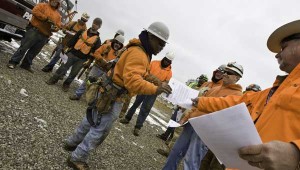
The job site safety meeting is one of the most important aspects of maintaining a program where both the company’s managed safety rules are kept active as well as the methods for reporting unsafe conditions or practices.
As contractors, we are all aware of OSHA and its role in protecting the health and safety of our workforce. Many contractors send their personnel to receive training related to record keeping requirements and job site regulations; however, one area that is often overlooked relates to the laws under OSHA’s jurisdiction that protect “whistleblowers”. People generally associate this term with an employee who “turns in” an employer for unsafe practices. While this is certainly an accurate association, there are much more subtle forms of whistleblower violations that an employer may engage in, some of which may not even be recognized within the company.
The OSH Act, signed into law in 1971, created the Occupational Safety and Health Administration within the U.S. Department of Labor. The OSH Act requires employers to provide a safe and healthful workplace for all employees. This general requirement is also known as the “General Duty Clause” and all of the published OSHA standards, such as the 29 CFR 1926 Construction Industry Standards, are basically extensions of this general requirement. The Act also gives employees the right to file an OSHA complaint, the right to take part in an inspection or speak to an OSHA Compliance Officer, and the right to raise a concern or complaint about a health or safety issue. Employees must also be given reasonable access to company records regarding accident and exposure rates. There are many laws under OSHA’s jurisdiction that protect employees from discrimination or retaliation when they exercise any of these rights. In fact, OSHA enforces the whistleblower provisions of 22 statutes protecting employees who report violations of various securities laws, trucking, airline, nuclear power, pipeline, environmental, rail, public transportation, workplace safety and health, and consumer protection laws.
FIVE EMPLOYER STEPS TO WHISTLEBLOWER COMPLIANCE
- Make sure superintendents know employees have the right to file OSHA complaints.
- Create an environment that encourages reporting unsafe conditions.
- Provide proper training throughout your company on the handling of complaints.
- Institute a reporting system that is effective to the chain of command.
- Review incentive programs to ensure they don’t discourage reporting of incidents.
Classic examples of retaliation against an employee include firing them or laying them off, “blacklisting” them within the industry, demoting them or denying them a promotion or other benefits. Threats, harassment and intimidation are also considered violations of the whistleblower protection laws. While these so called classic examples may be fairly straightforward, i.e. the employee files a complaint and the employer finds out and retaliates, there are also much more subtle forms of violations that employers need to be aware of. These more subtle forms of violations include intimidation or harassment by middle managers who may not be aware of the laws, creating an overall environment that discourages the reporting of hazards, and the use of any incentive program that disciplines or assigns any sort of demerits to individuals who report injuries.
OSHA has announced stepped up investigation and enforcement in this area, so it is important for employers to make sure none of their policies or practices violates the law. The first two issues, harassment by managers who may not be aware of the laws, and having an overall environment that discourages the reporting of safety issues, can be resolved through training and policy implementation. Make sure your superintendents, foremen and crew leaders understand that all employees have these rights and instruct them that they cannot take action against employees for exercising these rights. Creating an environment that encourages the reporting of unsafe conditions can boost employee morale and it shows them that you care about them. Used as a management tool, a system like this can also help an employer be proactive in identification and abatement of hazardous conditions. Injuries to employees result in lost time, reduced productivity, lower morale, higher employee turnover, and increased workers compensation insurance costs (just to name a few).
The construction industry depends on its workforce to deliver its products and services. Creating an environment that shows these employees that you care about their health and well-being can lead to increased morale on the job site, it helps to reduce employee turnover, and helps management to identify and abate hazards before they have a chance to cause injuries.
In addition to these “human” impacts, occupational injuries, deaths and illnesses continue to have an extreme economic impact on the industry. The number of fatal and nonfatal injuries in 2007 was estimated to be more than 5,600 and almost 8,559,000, respectively, at a cost of $6 billion and $186 billion. The number of fatal and nonfatal illnesses was estimated at more than 53,000 and nearly 427,000, respectively, with cost estimates of $46 billion and $12 billion. For injuries and diseases combined, medical cost estimates were $67 billion (27% of the total), and indirect costs were almost $183 billion (73%). Injuries comprised 77 percent of the total, and diseases accounted for 23 percent. The total estimated costs were approximately $250 billion.
The medical and indirect costs of occupational injuries and illnesses are sizable, at least as large as the cost of cancer. Workers’ compensation covers less than 25 percent of these costs.1 To help create an effective environment, an employer needs to provide proper training throughout the company to ensure that managers know how to properly handle complaints and suggestions, and to ensure that its trade’s people understand both their rights and their responsibilities. In any workplace, it is often most affective to have a system of reporting that results in issues being reviewed by people outside the reporting employee’s direct chain of command. In the construction industry, this can be especially helpful.
In our industry we go to work every day on multi-employer worksites, under constantly changing job site conditions and ever increasing pressures to get the job done. When a foreman is in the middle of trying to balance safety, productivity and quality, it can be easy to inadvertently overlook the significance of a single employee’s issue or concern. It is the employer’s challenge to create a system that seeks to remove causes of concern before they arise and to then effectively handle the unforeseen situations that arise everyday on our job sites.
The improper use of incentive programs has recently come into the public view in a case filed by OSHA earlier in 2013 against BNSF Railway Company. This is a large railroad company that has been in business for decades and probably has more resources at its disposal than many general contractors, and certainly more than most trade contractors, yet they still found themselves the subject of a very serious investigation into violations of whistleblower protection laws under OSHA’s jurisdiction.
This case highlights the potential subtleties of the law and illustrates how easy it could be for an incentive program to cross the line. OSHA has provided a great deal of information on this investigation and interested employers may find it helpful to read more on OSHA’s web site at www.osha.gov (search for BNSF Accord).
As an overview, BNSF had a program in place known as its Personal Performance Index. Under this plan, an employee would accrue points for reporting on-the-job injuries. The accrual of too many points was used as a criteria in the selection of employees who would be required to undergo additional reviews and possible disciplinary actions. This program resulted, according to BNSF employees, in an environment where the reporting of on-the-job injuries was discouraged. OSHA viewed this as a direct violation of the whistleblower protection laws. By assigning points to injured employees, regardless of the root cause of the incident, the company was not only in violation of the whistleblower protection laws, but they were also missing out on the opportunity to find and fix hazardous conditions.
Management reports that inaccurately show no on-the-job injuries are virtually useless as a tool for identifying areas that need to be addressed within a company’s operations.
The OSHA investigation into BNSF’s work practices resulted in a settlement with multiple employees and the signing of an agreement between BNSF and OSHA which included major changes to work place programs and continued monitoring of the programs by OSHA to ensure future compliance.
Any company could find themselves in this situation if they are not aware of the laws and how OSHA applies it to them. Any company incentive program that discourages the reporting of injuries is viewed by OSHA as flawed and has the potential to start a probe into violations of the whistleblower protection laws.
Consider something as seemingly innocent as a program that states “if no one gets hurt for the next 60 days, everyone on the crew gets a $250 bonus – but if one person gets hurt, then no one gets bonuses and we start the 60 day clock over.” On the surface, this might seem valid. The idea is to eliminate injuries and encourage the entire crew to look out for each other; however, this plan could easily be flawed and have the undesired effect of discouraging the reporting of any workplace injuries. For example, let’s say one member of the concrete placement crew is injured on some rebar, installed by others, that was not properly capped. The foreman takes the injured worker to the emergency room where he is stitched up. The company has good health insurance for its employees and the foreman suggests that the worker just have the bill paid by his health insurance. That way the injury doesn’t have to be reported to the company, and the crew doesn’t risk losing $250 each over an injury that they all feel is someone else’s fault anyway.
All of a sudden, what seemed like a simple plan to reduce accidents has turned into:
- A potential violation of OSHA whistleblower protection laws because the employee is being discouraged from reporting an injury
- A potential workers compensation insurance fraud case (depending on the laws of your state)
- A potential disgruntled employee due to the pressure being placed on them to keep the injury a secret
- A missed opportunity for the company to identify a hazardous condition on the job site, potentially leading to repeat incidents
Late in 2012, OSHA created the Whistleblower Protection Advisory Committee and Dr. David Michaels, Assistant U.S. Secretary of Labor in charge of OSHA, made the Whistleblower Protection Program a directorate, creating the Directorate of Whistleblower Protection Programs (DWPP) and adding over 35 positions for whistleblower field staff nationwide.
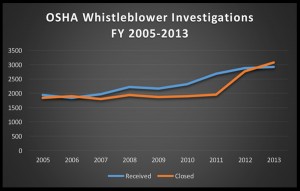
Fig. 1 – OSHA Whistleblower complaints for FY 2005-2013. Note the over 35% increase in annual cases closed in 2013 versus 2011.
The effects of these changes are illustrated in the chart in Figure 1 which shows a marked increase in the number of cases closed since the new Directorate was established. More recently, OSHA established an on-line portal that allows an individual to file a complaint over the Internet which is routed directly to the appropriate authority. With these significant changes and attention focused on enforcement, it is certainly prudent for all companies, large and small, to review their programs and policies for compliance. Make sure your incentive programs do not have unintended consequences. Educate your managers, superintendents and even foremen so they are aware of the laws. Work to create an environment that seeks to identify and eliminate potential hazards. Create a culture of safety that protects our human resources and encourages equal attention be paid to safety, productivity and quality.
ABOUT THE AUTHOR

Jim Rogers, is the Director of the OSHA Training Institute Education Center at Arizona State University, a part of the Del E. Webb School of Construction. He also teaches in the construction management program as an Associate Faculty member with courses including concrete, reinforcing, productivity and safety. Mr. Rogers has been involved in the construction industry for more than 25 years, specializing in concrete and post-tensioning. For additional information, visit http://osha.asu.edu.
